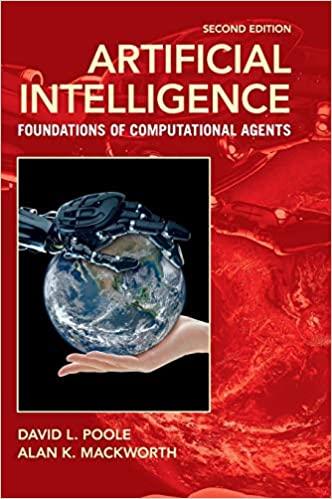13. This question explores how integrity constraints and consistency-based diagnosis can be used in a purchasing agent
Question:
13. This question explores how integrity constraints and consistency-based diagnosis can be used in a purchasing agent that interacts with various information sources on the web. The purchasing agent will ask a number of the information sources for facts. However, information sources are sometimes wrong. It is useful to be able to automatically determine which information sources may be wrong when a user gets conflicting information.
This question uses meaningless symbols such as
a, b,
c, …, but in a real domain there will be meaning associated with the symbols, such as a meaning “there is skiing in Hawaii” and z meaning “there is no skiing in Hawaii” or a meaning “butterflies do not eat anything” and z meaning “butterflies eat nectar”. We will use meaningless symbols in this question because the computer does not have access to the meanings and must simply treat them as meaningless symbols.
Suppose the following information sources and associated information are provided.
Not every source can be believed, because together they produce a contradiction.
(a) Code the knowledge provided by the users into AILog using assumables. To use a clause provided by one of the sources, you must assume that the source is reliable.
(b) Use the program to find the conflicts about what sources are reliable. (To find conflicts you can just ask false.)
(c) Suppose you would like to assume that as few sources as possible are unreliable.
Which single source, if it was unreliable, could account for a contradiction (assuming all other sources were reliable)?
(d) Which pairs of sources could account for a contradiction (assuming all other sources are reliable) such that no single one of them could account for the contradiction?
Step by Step Answer:

Artificial Intelligence Foundations Of Computational Agents
ISBN: 9781107195394
2nd Edition
Authors: David L. Poole, Alan K. Mackworth






